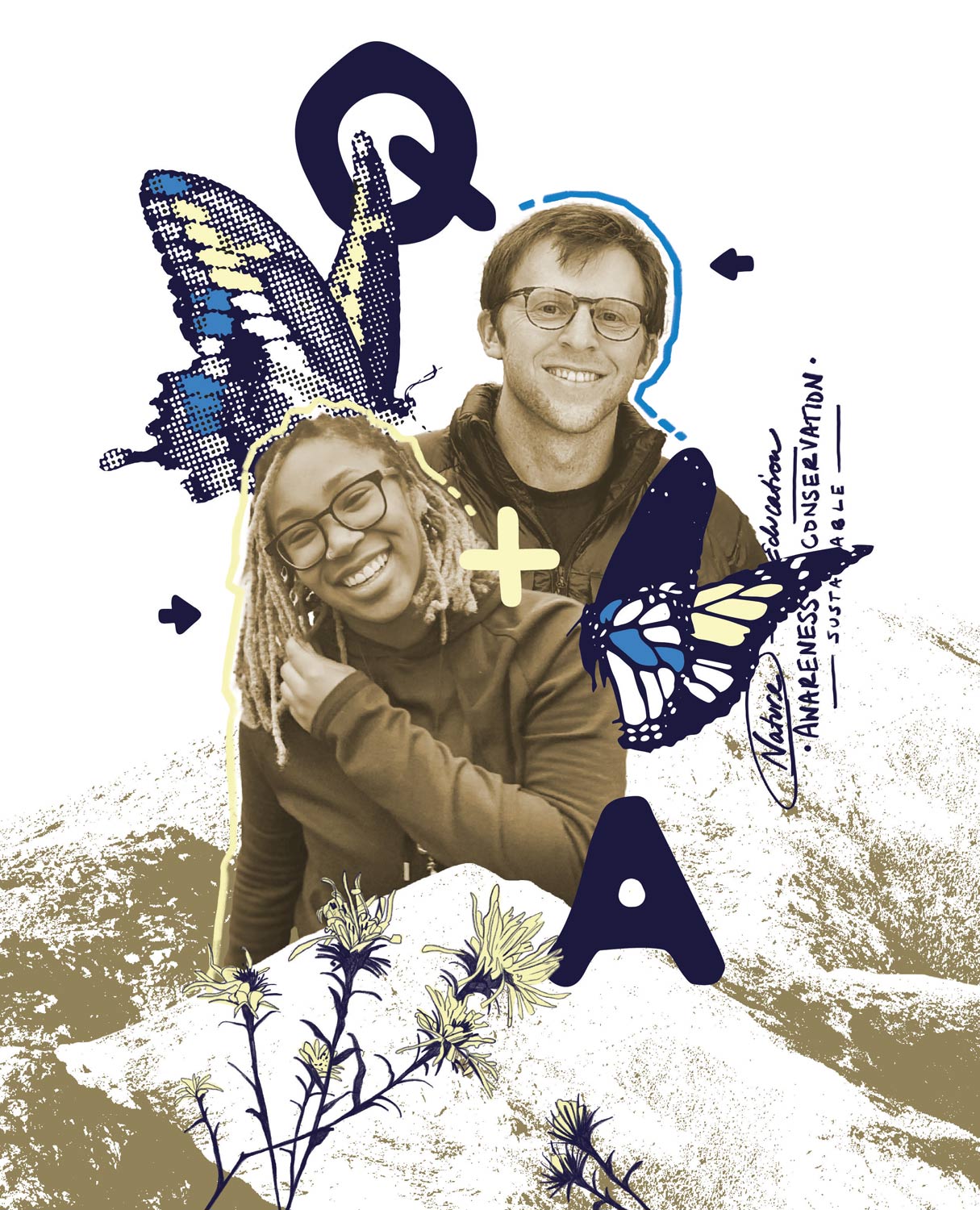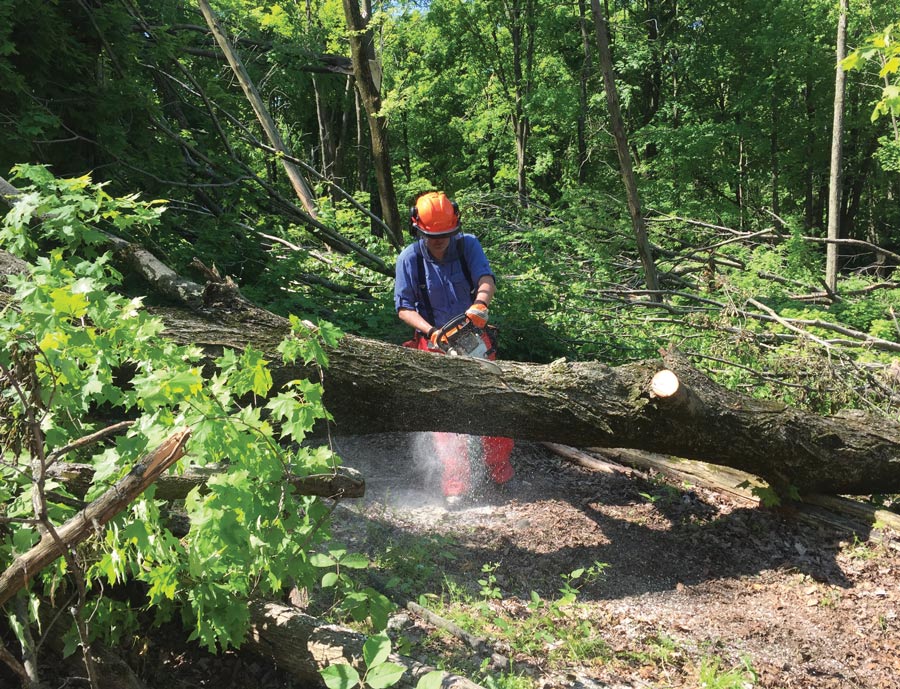FROM
GENERATION
TO GENERATION
The Appalachian Trail is a multigenerational project. Throughout its 102-year history, maintenance and management of the Trail have passed through at least six generations—from Benton MacKaye’s to members of the Greatest Generation, Silent Generation, Baby Boomers, Generation X, and Millennials.
In January 2023, the first member of Congress from Generation Z, Maxwell Frost (FL-10), was sworn in. As a new generation begins to assume societal leadership roles, what are their thoughts about inheriting responsibility for the A.T.? And more broadly, what expectations do they have for the continued protection of public lands used for outdoor recreation?
We recently sat down with two twenty-somethings pursuing careers in environmental conservation to hear their thoughts, ideas, and concerns.



Simon: My first time on the Appalachian Trail was also in the White Mountains. I grew up in New York City, and from a young age I always yearned to escape the city and spend time outdoors. When I was 10 or 11, I went on my first camping trip along the Appalachian Trail in the Whites. We are lucky to have started out on one of the most beautiful parts of the Trail!
Lauren: My most intense experience on the Trail was after I joined the ATC’s Next Generation Advisory Council. We did an 11-mile out-and-back hike from Amicalola Falls. I remember worrying beforehand if I had the right gear to enjoy it. But once I stepped on the Trail, it felt wonderful to be surrounded by so much vegetation, to feel the ground beneath my feet. The A.T. is such a special place, and so few people know about it.
Simon: I agree about the mental health benefit. That’s going to become even more important for our generation due to the mental health crisis among youth, which has only been exacerbated by COVID-19.(1) And for a society that is increasingly reliant on technology and screens, the Trail provides such a calming escape.
Lauren: I’m also concerned about encroaching development. In addition to the large cities within a half-day’s drive, the small communities adjacent to the Trail can still have issues with urban runoff contaminating local water supplies, for example. The lack of environmental literacy is also a big challenge. I wonder if people would continue to treat lands in a dismissive manner if they knew more about what makes an ecosystem work, how it supports us, and what it needs to thrive. We protect things if we know how our behavior can impact them, positively or negatively.
Simon: I agree incorporating environmental education into K-12 curriculums would help. I think there are challenges with promoting environmental literacy outside the classroom. Cost can be prohibitive for some people who want to take outdoor educational courses, such as wilderness first aid or preparedness courses. We also can’t put up a bunch of signs along the Trail to educate people about staying on the footpath, in order to minimize erosion or protect the surrounding ecosystem. That would adversely impact the Trail experience. The ATC is working to make outdoor education more accessible by hosting free volunteer trainings and conducting outreach to ensure those trainings reach underrepresented audiences.
Lauren: Education is also a conduit to experience. We want our students to learn about the forest — and in the forest. Field trips need to include time in the outdoors. That should be standardized and prioritized for the most marginalized in our society, who are the least likely to go to a national park.


Simon: The fact that in most cases you need a car to access public lands creates a barrier. I agree that the gear is prohibitively expensive, but that’s mostly true for equipment needed for overnight camping or multi-day hikes. There’s also an outdoor culture, with its own jargon and insider know-how, and that culture is very white. I think creating opportunities for people to enjoy the outdoors among groups or communities that aren’t predominately white can make the outdoors more accessible. I know the ATC has co-hosted events with Latino Outdoors, and there are many other incredible organizations working to make public lands more inclusive.
Lauren: I also think it would help to facilitate opportunities for people to explore the outdoors in groups based on a particular affinity — your professional affiliation or ethnic identity. These groups do exist, but some of them seem to be more active out west.
Simon: I think it is hard to say. I agree with Lauren that longer work hours and growing inequality will reduce how much time people have to volunteer. On the other hand, I think our generation is particularly motivated to give back through service. It is hard to predict what will happen, but at the very least, there is a real risk that relying on volunteers won’t always be a sustainable model.
(2) The Nature Conservancy has identified the Appalachians as a priority landscape for conservation due to the resilience it provides in the face of a changing climate.